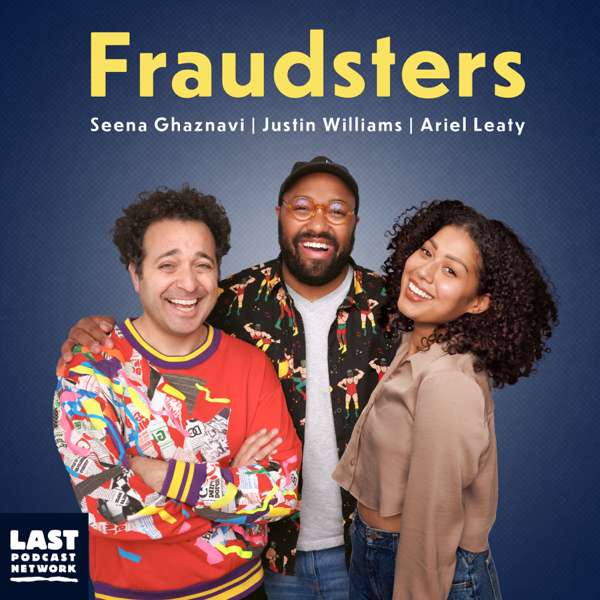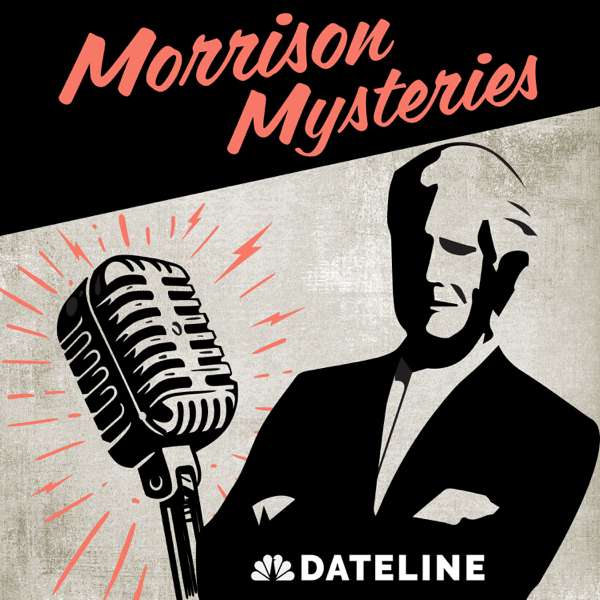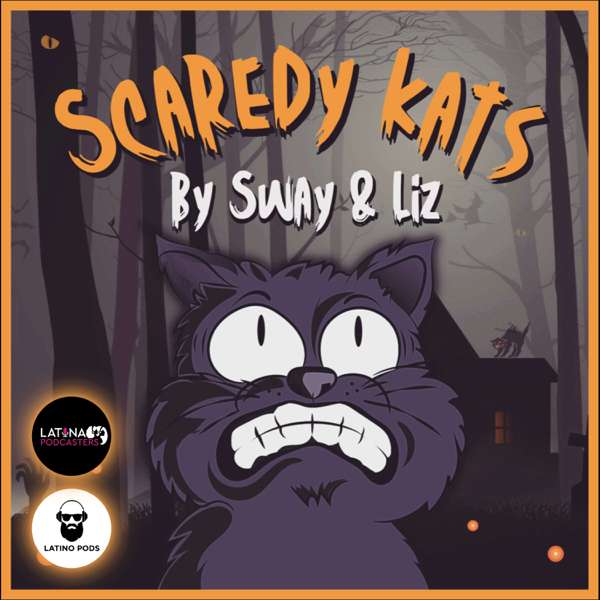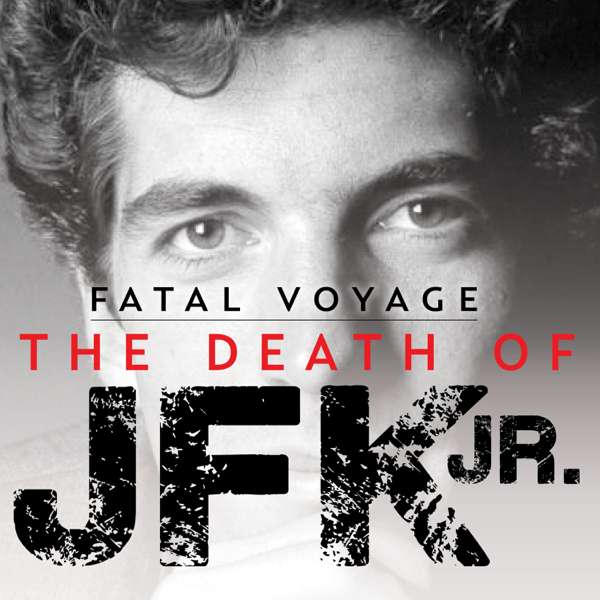The Pew Research Center found in 2022 that nearly 25% of top-ranked podcasts were true crime-related. In the next set of episodes, host Nat Cardona speaks with Dianne Berg, college professor and author of What's behind our enduring fascination with wives and mothers who kill, to explore why this niche of true crime fascinates so many.
In this first episode, we discuss the history of the public's nearly-fanatical interest in mothers and wives who commit murder and why societies are particularly fascinated by these stories.
To learn more about Dianne Berg, click here.
Episode transcript
Note: The following transcript was created by Slack and may contain misspellings and other inaccuracies as it was generated automatically:
Hey there, as a listener of this podcast, you must be at least somewhat into the whole true crime genre.
But did you know that True Crime is the most common topic among top ranked podcasts?
To be specific?
The Pew Research Center reports that in 2022 almost a quarter of top podcasts are primarily about true crime.
Welcome to Lee Enterprise's Late Edition Crime Beat Chronicles.
I'm your host Nat Cardona.
In the next two episodes, we're going to explore a very niche area of true crime stories.
The obsession that fans seem to have with killer wives and mothers.
But how does one even begin to tackle such a complex topic?
Enter Dianne Berg.
She's a professor at Clark University and the author of the article, what's behind our enduring fascination with wives and mothers who kill her?
Research traces this phenomenon back to literature from the 15 hundreds and 16 hundreds with clearly printed details of the early fascination that people had with murderesses.
And here's my interview with Dianne just to kick things off.
Why don't you just tell me a little bit about yourself and your background and what you do?
Nowadays.
Ok.
I, that's kind of hard to answer.
I mean, where he, ok.
Well, once upon a time before I decided to become an academic, I, was, the education program manager at a Museum of Medieval and Renaissance Arms and Armor, in Worcester, Massachusetts, called the Higgins Armory Museum, which is now sadly defunct.
I left years before, it, it went out, sort of went out of business. But while I was there, I learned a great deal about, armor and, and weapons and warfare and medieval politics and things.
I was always very interested in medieval renaissance, history and literature. But not so much that side of it. But it kind of opened up, a different window in, into these things for me doing that work.
And when I left there, I realized that what I had enjoyed most about that job was researching and developing education programs.
So, essentially, you know, going down research rabbit holes and writing things up.
So I went and I got a master's degree and I did the master's degree basically to see if I wanted to get a phd.
And after I had finished that, then I decided that I did indeed want to get a phd.
So, my dissertation, my doctoral dissertation focused on kind of, literary representations of true crime between about 1550, 1650.
And it was very interesting because the thing that jumped out at me when the project first started, the sort of germ of the project came about by accident when I was researching something completely different.
And I came across this pamphlet about a woman named Margaret Vincent.
And in 1616, she strangled two of her Children.
She had 31 was away at the wet nurse and so was spared and she did so because she believed that she was saving them, she was saving them.
She was taking them out of a sinful world.
And her reason for this was that she wanted to convert to Roman Catholicism.
And she thought if they didn't do that, then they were going to be damned.
And her husband was not on board with that because basically being a Catholic was illegal was essentially illegal in early 17th century England.
So she did this bad thing for what she believed were good reasons and this just rang a bell in my head because back in 2001, this woman named Andrea Yates in Texas who was an evangelical Christian.
She strangled all five, she strangled and drowned all five of her Children.
And like Margaret Vincent laid them out neatly on a bed and said afterwards that she had done so in order to save them.
And so the, you know, this really kind of struck me and I wondered how many other cases where they're out there like this because we always hear about mothers who kill their Children as being, you know, evil monsters or, they want to get rid of the kids because they want to start a new relationship or, there's all these kinds of lurid stories that have been in the news just in the past 30 years or so.
I think someone like Casey, Anthony.
Right.
But what about good mothers?
Right.
What about good mothers who do this terrible thing for what they believe at the time are good reasons.
And then of course, we've just had this Lindsay Lacy case here in Massachusetts, which is unbelievably tragic and it is kind of still evolving in, in Andrea Yates case.
Postpartum psychosis was at play in Lindsay Clancy's case.
It certainly sounds as if postpartum psychosis was at play.
We can't know what was going on with Margaret Vincent in 16 16, but she did have a new baby at the time.
So, you know, I can't prove it.
But I have, but I have my theories.
So anyway, that particular story, stumbling upon that particular story was the kind of impetus for my doctoral work.
And for most of the things that I've published since, and I'm actually about to teach a class focused on these, these kinds of stories and that leads us here today, which is why I'm talking with you.
We had found that piece, the what's behind our enduring fascination with wives and mothers who kill because of all the things you said.
It's just the, the women as the monsters and it's such a, there's so few and far between that.
Yeah, it, people latch on to it and are fascinated by it.
So we'll just kind of jump into, the piece that you've written today.
Thank you for that all that back story leading us up to Margaret Vinson, Andrea Yates.
And we'll get more into the modern day examples and parallels that you drew even with that Utah mother, which is how you started your article.
But I kind of just want to jump into and maybe this is just me fan girling.
But the the tolstoy quote that you popped in there, each unhappy family is unhappy in its own way was a really good way to kick off.
Why this could be a source of interest for a lot of people looking at, you know, other people and being like, oh, that's another family's problem and that, that can't happen here and we'll get into all of that.
The first thing I wanna jump into is you mentioned how true crime is.
Nothing new.
It's always been a tale as old as time that people are fascinated with it and devour it in different ways.
Nowadays, we've got the podcasts and the documentaries and novels and this and that.
But from your background and the you know, 15, 50 16 50 that, that time range, it was not, obviously those things you mentioned, ballads, domestic tragedies and these penny pamphlets.
Can you, like, explain what those are like?
Like, what the hell are those?
Yeah, it's really interesting.
So, you know, there's no, news reporting in this period, right?
Like what we would think of as, you know, news reporting. But news does get disseminated obviously.
So, you know, if there's a big scandal, there is going to be ways for people to find out about it.
So we're, it's very interesting because we're also kind of in the early days of print, right?
The printing press arise in England in 14 75 William Caxton is the first guy to use the printing press in London in 14 75.
And he starts printing, aside from obviously religious things, you know, we're gonna are gonna get kind of priority.
He printed the Canterbury Tales and he, he printed Thomas Mallory's more Arthur.
It sort of like gives us some sense of what people were interested in reading, right?
So think about like, what were the first websites, right?
Because you can really make the printing press analogous to the internet.
Like, so what were the first things that started appearing on the internet?
It tells us something about what people were interested back in those like embryonic.
It, you know, information superhighway days.
So by the middle of the 15 hundreds.
You're getting more kind of political tracks being printed And starting to see chronicles.
So basically, these are what pass for.
They're not really news, they're kind of somewhere between like the encyclopedia Bria or something.
There's several chronicles that are very famous and their names aren't, aren't really important for our conversation.
But Rafael Hole and, and John Stow several others and they print these sort of big chronicles that are gonna give you the history of England, everything important that ever happened.
And, and mostly they just talk about kings and queens and battles and the usual things you would expect.
But this murder that happened in 15 51 which I write about in the article Thomas Arden, he was murdered on Valentine's Day 15 51 by his wife Alice and she conspired with her lover, a guy named Mosby, and some of some of their servants and a couple of hired killers.
The whole thing is actually kind of slapstick when I teach this.
When I teach the, the text that's based on the play Arden and my students are always like, I've had these murders compared to the wet Bandits in home alone, they're kind of incompetent.
That was good.
But but I can't get it out of my head.
But anyway, so this is, these are just middle class bourgeois people living in a London suburb.
And there's nothing important or famous or particularly interesting about them except the woman conspires to murder her husband.
And this winds up in one of these chronicles, it winds up in Holland.
It's chronicle amidst like, you know, Julius Caesar invading Britain and things like that.
And the reason he included this seemingly ordinary and unimportant episode he says is because of the horribleness thereof because the idea of a wife killing her husband is so horrible, right?
It goes against nature.
It goes against the sort of political theology of the time it threatens order in the household.
And in this period, there's this kind of analog framing of the household as like a miniature state, a little commonwealth.
There's a long tract about it by Robert John Dodd and Robert Clever that comes out in the 15 hundreds.
And essentially, it's kind of just saying that the household is just like a miniature kingdom and of course, who's at the top of the kingdom, right?
The husband and the father, right?
Everybody is subordinate just like the king is the head of the nation and God is the head of the universe.
And this is the analogy.
So if a wife kills her husband, it's it's a political crime, it's treason, it's like killing the king, right?
So, whereas if a husband kills his wife, he's guilty of murder.
And depending on his social class, he'll, he'll be hanged or maybe beheaded.
If a wife kills her husband, she's gonna be burned because that's the penalty for treason.
So this case gets way more attention than you would think it should merit and winds up in this chronicle and inspires a play called Arden of Fabric, which comes circa 15 90.
We don't know the writer is unknown.
And it also inspired at least one battle ballad that we know of that came out way later like 16 30 or something.
Which Ventri likewise is Alan Alice Arden, just before she dies before she gets burned at the stake.
And basically, she goes on for, I think 90 19 verses about how terrible she is and how sorry she is and how, what she did was really, really wrong and you should never tell.
So there's all this kind of like rhetorical work that these kinds of cases serve beyond just saying, OK, this is a crime, this is what happened.
These are the details.
It's like, so what right.
Going back to what you were saying about Tolstoy, right?
It's like, how can this be used weaponized to kind of reinforce the status quo?
And what's the word I want?
Sissuade discourage people, other people from doing this kind of thing, right?
Show them what the consequences are.
Mhm Yeah.
It's the, the true life scary story to keep people in line.
Yes.
Yeah.
Yes, for sure.
Ca a cautionary tale the cautionary tale.
Yes.
Yeah, we need to take a quick break. So don't go too far.
Ok.
So we're gonna toggle a little bit between current day and going back and it's going off of the things that you just mentioned.
So this is probably pretty straightforward and most people especially like true crime junkies should know this.
But statistically crimes committed, you know, whether it be a murder, a rape, a burglary kidnapping.
it's typically by somebody, you know, and it's typically a man who does it and I mean, I devour these True Crime podcasts and you always hear whatever the case, it's like the husband always does it or the boyfriend and, and it's true and, and, and that's sad.
But then it's like, ok, move on because it's time a dozen.
So when you've done your right, it's just a Tuesday.
Right.
You know?
Right.
Right.
Right.
It's a 20, that's sad.
And then it's like, so like when you've done your research in, in, on all your historical, you know, literature and all, whatever have you, my guess would be that you haven't seen men as portrayed in these cautionary tales as much as, you know, Margaret Vincent or Alice Arden that you mentioned.
Yeah.
Yeah.
I mean, I think, and it, I didn't really answer your question about the pamphlets and this ties into that.
So, these pamphlets are basically cheap.
I make them kind of analogous to, tabloid newspapers, you know, the things that you see at the supermarket checkout or, or online now, you know, with the kind of like the, the, the red thing in the UK, they call them red tops because they always have like a red headline.
And, you know, it's like, oh, you know, demon mother murders, helpless angel Children, you know, that, that kind of stuff.
And they, they're grabby and they're cheap and they're really disposable, right?
You read that and then you line the cat box with it or something.
And that's, these pamphlets were cheap like that.
They were mass produced.
you could buy it.
They lured, they always featured these, like, really kind of, lurid woodcuts, showing, you know, somebody hacking someone's head off or strangling a baby or whatever.
And the funny thing is that they're really kind of like early modern clip art.
They reuse the images over and over again and just changed the headline, which I think is really funny.
They're sort of like memes.
Yeah.
I'm no kidding.
Yeah, they are.
They're like memes.
So anybody would look at this image even though it's been used like six different times for 66 different context.
It's like, oh, well, that's like, oh, that's like, you know, somebody strangling their wife or something, you know, and it's just like, you know what this is gonna be about.
So, yeah, I think, I wrote a lot about this.
The way men, male perpetrators and female perpetrators are portrayed in these kinds of texts.
So, yeah, the pamphlets for sure, because they've got this kind of, again, the rhetoric is so similar to what you see in these tabloids that it's funny, it's really kind of like overwrought really over the top, kind of hysterical.
Do you remember Nancy Grace?
She used to be on TV.
She used to always follow, she'd be like, if somebody murders their kid, she's the one on TV.
Like that kind of tone that like screaming outraged, but kind of like titillated.
It's like, yeah.
Oh, I'm, I'm like pointing the finger.
These people are monsters, but I love it, you know, the tone is very, very, very similar.
So when a man does this kind of stuff, he's definitely what he's done is wrong.
So a man like kills his family or something, the portrayal of him is definitely, you know, the disapproving.
But what he has done the, the sort of social crime he has committed is, is called petty tyranny because a man is supposed to be in charge, right?
He's supposed to have all the power.
But if he, it's, and it's ok for him to chastise his subordinates, right?
Like it's his job to chastise his subordinates, you know, he should beat his Children.
If they misbehave, he should chastise his wife if she's, if she's insubordinate, right?
But he shouldn't kill them, right.
He shouldn't beat them to the point of, you know, maiming them or seriously harming them and he certainly shouldn't kill them.
So, when a man does these kinds of things, he has abused his power and that is very much disapproved of.
But there's also kind of a whiff of, there's often kind of a whiff of, well, what made him do it, what drove him to it?
Right.
Does this sound at all familiar?
You know, and I, I, ok, so it's, it's just funny that you brought this up because one of my notes that I I had mentioned is like going beyond like a guy who kills his wife.
You know, Scott Peterson comes to mind with Lacey Peterson and then Chris Watts, the family annihilator, right?
With his pregnant wife, right?
And you see every time these, these stories hit the news, like, you know, I often, I often just sort of have news on when I'm cooking in my kitchen and these things come on and I'm just like, I've got like a wooden spoon in my hand and I'm like, he did it like I know he did it like, you know, he totally, he definitely did it.
And I'm always right.
Yeah.
And it's just, it is.
So, so those two names and everything that you just had mentioned, I had this inner dialogue yesterday when I was thinking about it because it goes back to the top, like, why are, why are you and I talking today the why do we care so much when it's a wife and, or mother as opposed to the, you know, we can be like, oh, you know, Chris Watson Scott Peterson, like those guys are terrible, nail rotten hell.
But again, it goes back to when it's a woman, it's that monster.
It's a evil.
And then I kind of had this own thought dialogue.
I'm a mother myself and I'm, I'm actually pregnant.
So I'm gonna have a baby in four weeks.
Thank you.
So I'm kind of like, you know, going through all of these things and, you know, very much in the, you know, what makes me different from these other women who have done this historically or in more recent history.
But the thing that comes to mind is there is just something so grabbing about when women do this because you carry the child for so long and you birth the child and it's so much more intimate than the father who's removed and can kind of clean his hands in the sense of when there is a murder, you can go, you know, and that's because he's not involved.
So in the, in the natural process of pregnancy and birth.
So, yeah, when there are these women historically or modern day that do this, it's like how, you know, you just sit there and go, how you know, how could this happen?
And that's where we'll wrap up this week.
Come back next week where Dianne and I discuss how society has evolved or remain the same as far as discussing women's wellness, postpartum ghost and how all of that contributes to violence committed by women.
See omnystudio.com/listener for privacy information.

 Our TOPPODCAST Picks
Our TOPPODCAST Picks  Stay Connected
Stay Connected







